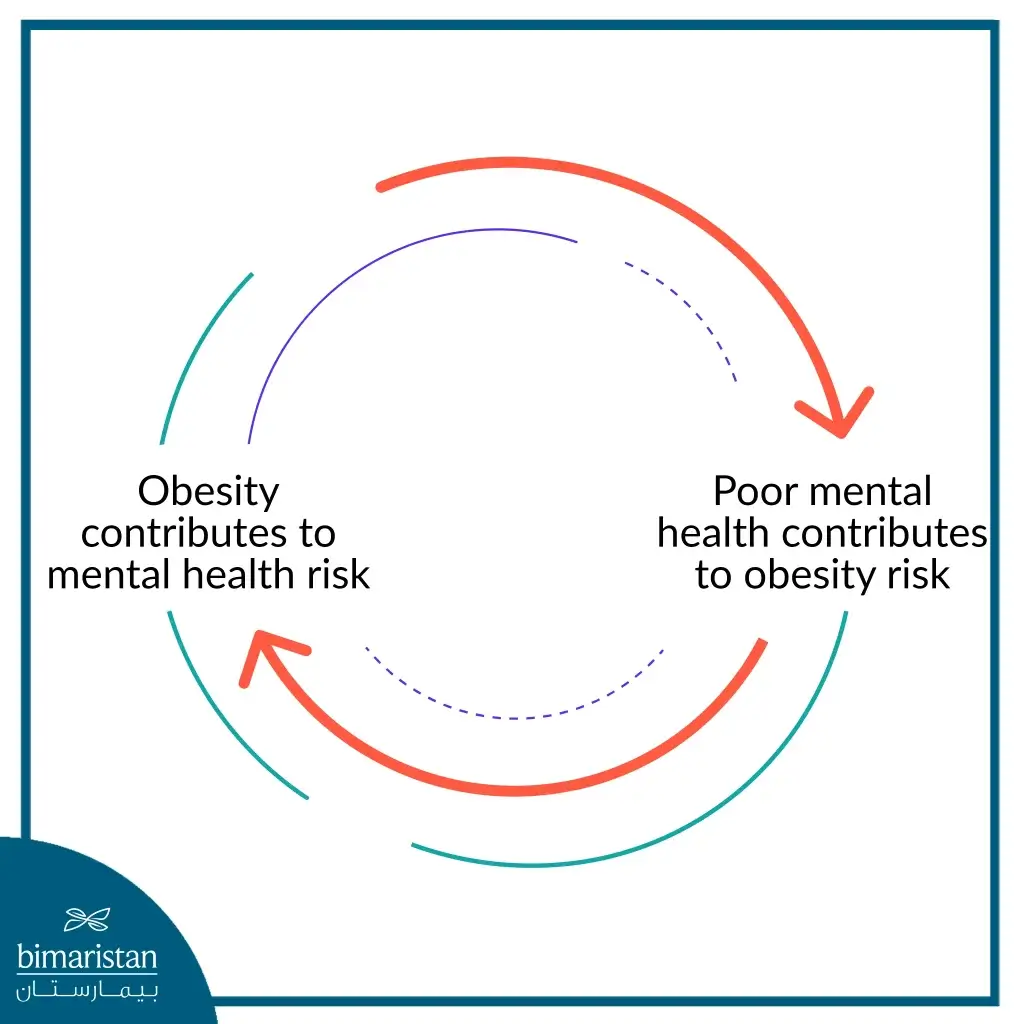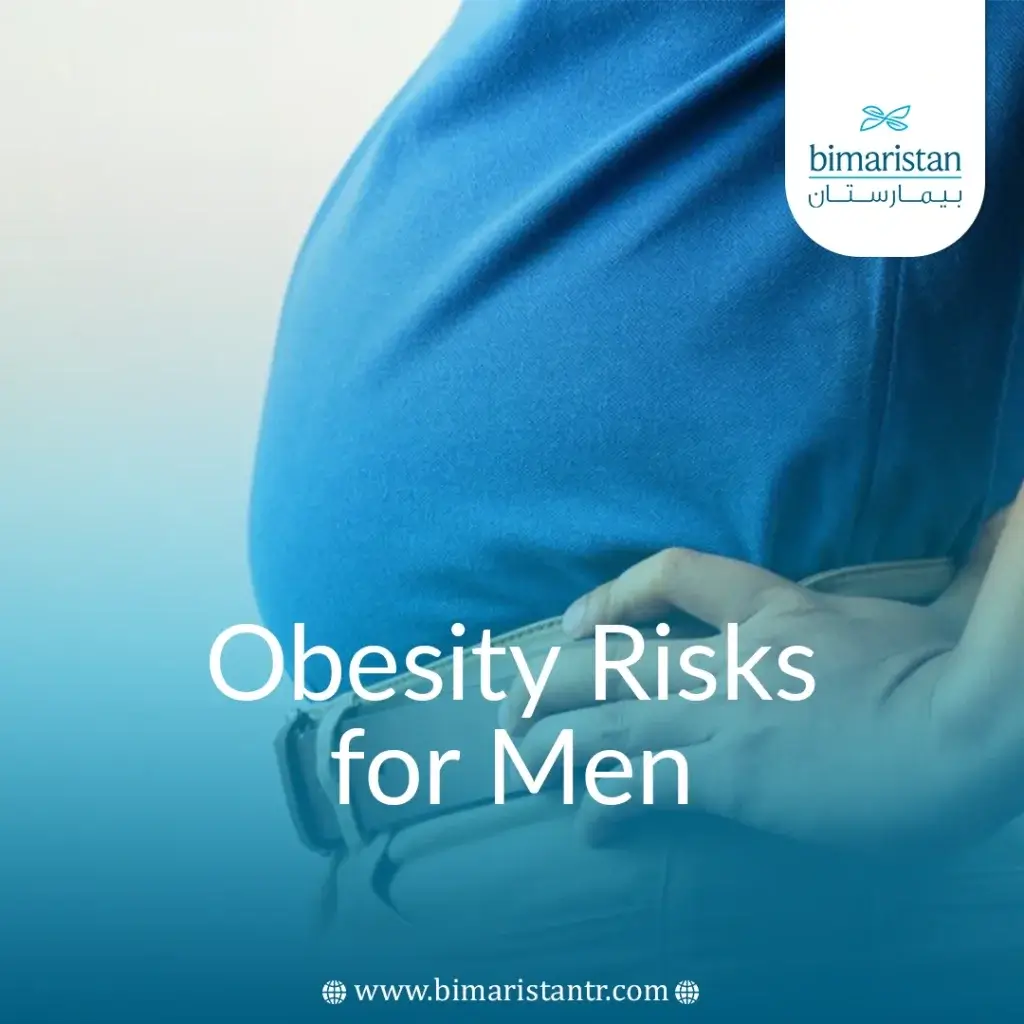Being overweight isn’t just a cosmetic issue; it’s linked to real health issues. Some of the obesity risks for men include high blood pressure, diabetes, and asthma, which increases rates of premature death.
For men in particular, prostate health is of particular concern in the case of obesity. Obesity is a significant risk factor for the development of prostate cancer, and even more alarming is a new study that found that early prostate cancer cell tests and markers are incorrect in obese men due to their low testosterone levels. Therefore, early diagnosis is uncommon; it is detected late in the advanced stages.
The good news is that obesity is largely preventable. The key to success is achieving an energy balance between calories consumed and calories input from food.
Types of obesity for men and women
In the past, obesity was categorized as either normal obesity or morbid obesity, whereas morbid obesity was defined as obesity with abnormal symptoms. This classification has been abandoned and replaced by a classification based on the severity of obesity as follows:
- Overweight (not obese): Body mass index (BMI) of 25.0 to 29.9.
- First-degree obesity: Body mass index (BMI) of 30 to 34.9.
- Second-degree obesity: Body mass index (BMI) of 35 to 39.9.
- Third-degree obesity: Body mass index (BMI) of 40 or more.
According to the U.S. National Health Interview Survey (NHANES), about 20% of adults in the U.S. meet the criteria for first-degree obesity, while about 9% and 6% have second-degree and third-degree obesity, respectively.
These classifications have a direct impact not only on a person’s health but also on their risk of death.

Methods for measuring obesity
Body mass index (BMI) has long been the standard for diagnosing obesity. Still, its importance as a diagnostic tool has declined due to its misinterpretation of certain conditions, such as being too short or tall. According to BMI, an intensely trained athlete may be overweight but still be perfectly healthy. Similarly, a person who is at a healthy weight based on BMI may have an unhealthy amount of body fat and be at risk for weight-related diseases.
To this end, there are different ways to diagnose obesity that may provide more helpful information than BMI alone:
Body fat percentage (BF%)
It is the ratio of body fat to total body weight. This ratio can be estimated using skinfold calipers, hydrostatic weighing, and 3D body scans. According to the American Council on Exercise, body fat percentages more significant than 32% in females and 25% in males are considered a diagnosis of obesity.
Centralized obesity measurement
Central obesity, also known as abdominal obesity, is the excessive accumulation of fat surrounding the abdominal organs. It is one of the diagnostic criteria for metabolic syndromes and is strongly associated with an increased risk of heart disease in people with a BMI over 30.
There are several methods used to diagnose central obesity, including:
- Absolute waist circumference: This is the measurement around the widest part of the waist. Measurements more significant than 40 inches (102 centimeters) in males and 35 inches (88 centimeters) in females are considered a diagnosis of central obesity.
- Waist-to-hip ratio: This is the waist circumference divided by the circumference of the hips. If the waist-to-hip ratio is more significant than 0.9 for males and 0.85 for females, it indicates central obesity.
- Waist-to-height ratio: This is the waist circumference divided by height. If the ratio is more significant than 0.5 for adults under 40 and greater than 0.6 for adults over 50, it indicates central obesity.

What are the obesity risks for men?
The adverse effects of obesity are endless, targeting all tissues of the body, and people who are obese have a higher chance of developing these health issues:
Type 2 diabetes
Diabetes is a disease that occurs when the glucose level in the blood is too high. Diabetes is one of the most significant obesity risks for men, with nearly 9 out of 10 people with type 2 diabetes being overweight. Over time, high blood glucose can lead to heart disease, stroke, kidney disease, eye issues, nerve damage, and other health issues.
Doctors advise all diabetic patients to treat their obesity either by dieting or by undergoing one of the bariatric surgeries such as mini bypass surgery.
High blood pressure
High blood pressure is a condition in which blood flows through the blood vessels with more force than usual. Having excess body weight can increase blood pressure because the heart needs to pump more blood to supply all the cells with blood. Excess fat can also damage the kidneys, which help regulate blood pressure.
Heart disease
Heart disease is a term used to describe several health issues that affect the heart, such as heart attack, heart failure, angina, or irregular heartbeat. Being overweight increases the risk of heart disease, plus being overweight can put more strain on the heart.
Stroke
A stroke occurs when a blood vessel in the brain or neck is blocked or burst, cutting off blood flow to part of the brain. A stroke can damage brain tissue and make the sufferer unable to speak or move parts of their body.
Being overweight is known to increase blood pressure, which causes stroke. Losing weight may help lower blood pressure and other risk factors for stroke, including high blood glucose and high cholesterol.
Metabolic syndrome
Metabolic syndrome is a group of conditions that increase the risk of heart disease, diabetes, and stroke. To be diagnosed, a patient must have at least three of the following conditions:
- Large waist size
- High levels of triglycerides in the blood
- High blood pressure
- High fasting glucose
- Low HDL cholesterol level
Obesity risks for men are closely linked to metabolic syndrome and physical inactivity, so lifestyle changes may help control weight and minimize potential risks.
Fatty liver disease
Fatty liver disease develops when fat accumulates in the liver, which can lead to severe liver damage, cirrhosis, or even liver failure. Non-alcoholic steatohepatitis often affects people who are overweight. If you are overweight, losing at least 3% to 5% of your body weight may reduce the fat in your liver.
Some cancers
In all cancers, some of the body’s cells grow abnormally and sometimes spread to other body parts. Being overweight can increase the risk of certain types of cancer, with overweight men having a higher risk of colorectal and prostate cancer.
Breathing Problems
Being overweight can also affect how well your lungs work, such as:
Sleep apnea
Sleep apnea is a common condition in which the upper airway is blocked, causing irregular breathing or even complete cessation for short periods. Untreated, sleep apnea can increase the risk of many health issues, including heart disease and diabetes. That’s why sleep apnea in adults is one of the most crucial obesity complications for men.
asthma
Asthma is a chronic condition that affects the airways of the lungs, causes permanent inflammation, and often narrows the airways. Obesity can increase your risk of asthma. Losing weight can make it easier to manage asthma symptoms.
Osteoporosis
Osteoarthritis is a common, long-term health issue that causes joint pain, swelling, stiffness, and a reduced range of motion. Obesity is a significant risk factor for osteoarthritis of the knees, hips, and ankles. Excess weight may increase the risk of osteoarthritis by putting extra pressure on the joints and cartilage, and excess body fat increases the levels of inflammatory elements in the blood
Gout
Gout is a type of arthritis that causes joint pain and swelling. It develops when crystals of a substance called uric acid build up in the joints. Risk factors for gout include obesity, male gender, high blood pressure, and eating foods rich in purines, such as red meat and liver. Gout is mainly treated with medications, but weight loss may help prevent it and alleviate its symptoms.
Diseases of the gallbladder and pancreas
Being overweight and obese may increase the risk of gallbladder diseases such as gallstones and cholecystitis. Obese people have higher levels of cholesterol in the bile, which can cause gallstones. Having a large amount of fat around the waist may also increase the risk of gallstones, but losing weight quickly increases the risk.
People who are obese have a higher risk of developing pancreatitis. Eating a healthy, low-fat diet can minimize your chances of developing pancreatitis.
Kidney diseases
This is the inability of the kidneys to filter blood properly. Obesity increases the risk of diabetes and high blood pressure, the two most common causes of chronic kidney disease. Losing weight may help prevent or delay chronic kidney damage if you are overweight.
Pregnancy Problems
Being overweight increases your risk of developing health issues during pregnancy that can affect your pregnancy and your baby’s health. Pregnant women who are obese may have a higher chance of developing the following:
- Gestational diabetes
- Gestosis or high blood pressure during pregnancy
- Cesarean section
- Complications from surgery and anesthesia, especially for those who are obese
Increased health risks for the child, such as:
- Premature birth
- Heart disease and asthma
- Infertility
Sexual function issues
One of the most serious obesity risks for men is sexual dysfunction, which increases the risk of erectile dysfunction, a condition in which males are unable to get or maintain an erection firm enough for satisfactory intercourse. Few studies have looked at how obesity affects female sexual function by contributing to issues such as loss of libido and the inability to become aroused or experience pain during intercourse.
The impact of obesity on men’s mental health
Obesity risks for men are not limited to physical aspects but extend to psychological harms that significantly affect the quality of life. Many obese men suffer from various psychological effects, such as depression, anxiety, and low self-esteem. These psychological damages are associated with increased stress levels due to the prevailing social consciousness about body image and the pressure surrounding the patient. Obesity can also lead to feelings of social isolation due to discomfort in public or feeling ashamed of one’s appearance.
It is essential to note the interdependent relationship between obesity and mental health, as poor mental health leads to obesity.
Obesity is an important factor that greatly affects men’s mental health and must be addressed from both the health and psychological aspects to ensure a more balanced and happy life.

Is there a link between obesity and fertility in men?
There is a relationship between obesity and fertility in men, and the damage of obesity to men is one of the main factors affecting reproductive ability through:
- Hormonal disorders: Excess fat leads to decreased testosterone levels and increased estrogen, which affects sperm production.
- Low sperm count and quality: Obese men suffer from low sperm count and poor sperm motility.
- Insulin resistance: Obesity increases insulin resistance, which affects reproductive hormones.
- Psychological effects: Obesity leads to low self-esteem and anxiety, which affects sex drive.
- Increased testicular temperature: Excess fat around the pelvis may raise the temperature of the testicles, affecting sperm health.
How to Prevent Obesity
Preventing obesity in children and teens
Children and adolescents can become obese due to poor eating habits and lack of physical activity. Recommendations for preventing overweight and obesity in children and adolescents include the following:
- Gradually working to change bad eating habits
- Parents who eat healthy foods and engage in physical activity are successful role models for their children
- Encouraging physical activity and sports
- Limit the use of phones, computers and TV to less than two hours a day
- Encourage children and teens to eat only when hungry and eat slowly
- Encourage children and teens to drink water instead of sugary drinks such as sodas and sports drinks
Preventing obesity in adult men
Several strategies help prevent obesity and maintain a healthy weight, such as:
- Eat five to nine servings of fruits and vegetables daily: A vegetable serving is one cup of raw vegetables or ½ cup of cooked vegetables, and a fruit serving is one small to medium-sized piece of fresh fruit.
- Choose whole-grain foods: such as brown rice, while avoiding foods made with refined white sugar, flour, and saturated fats.
- Know the calories and nutritional values in each meal.
- Reduce the size of portions by using a smaller plate.
- Work out for 60 to 90 minutes three to four days weekly.
Obesity risks for men are not limited to physical aspects but extend to mental health and fertility, making it necessary to look for practical solutions to minimize its effects. If you are a man suffering from obesity and want to improve your overall health, Bimarestan Medical Center is the perfect choice for you. We offer you a range of advanced bariatric surgeries that are performed under the supervision of specialized doctors and at the highest level of medical quality.
Sources:

